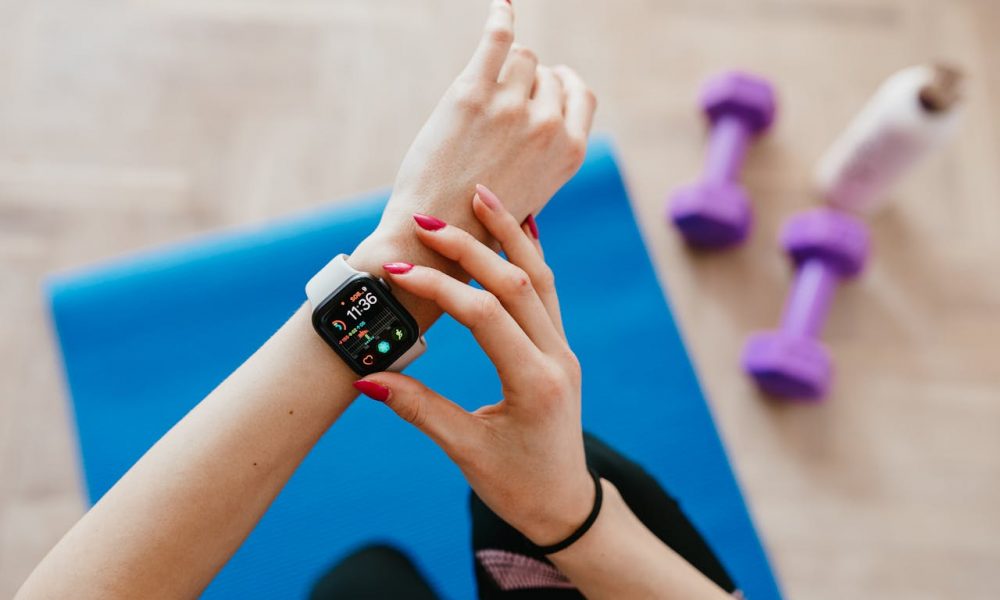
Here’s How Tracking Health Metrics Can Help You Live Longer

Living longer and healthier starts with awareness. And no, we are not talking about vague goals or random health tips. We are talking numbers, data, and your body’s signals. Tracking key health metrics is one of the most underrated ways to boost your lifespan and protect your quality of life.
When you know what is normal for your body, you can catch what is not normal early. That is how people stay ahead of disease instead of reacting to it too late.
The Power Behind Prevention
Longevity isn’t just about living longer. It is about living healthier for longer. That means stopping disease before it starts, and tracking health metrics helps you do exactly that.

Ketut / Pexels / By regularly monitoring the right data, you can spot small issues before they turn into major ones.
Think of it as catching a tiny leak before it floods the whole house. You see subtle warning signs, things like rising blood sugar or lower sleep quality, that most people miss.
Top researchers like Dr. Zahi Fayad are using tech to build “digital twins”, real-time models of your body that predict how your lifestyle choices might impact your future health.
Change your diet? Add more cardio? This digital twin can simulate the impact before you even make the change. It is personalized, data-driven health guidance that evolves with you. The more you track, the smarter the recommendations get.
Longevity Starts with the Right Metrics
To add healthy years to your life, you need to track the right numbers. Here are some of the most important ones.
Start with cardiovascular fitness. VO₂ max shows how well your body uses oxygen during exercise. Higher VO₂ max means better heart health and a lower risk of death from all causes.
Then there are your metabolic markers. Fasting insulin is a silent signal of future problems. Insulin resistance can start years before your blood sugar rises. If you catch it early, you can make changes before diabetes or heart disease shows up. Blood glucose trends also tell you how your body reacts to food, helping you adjust your diet to stay sharp and stable.
Look Deeper Into Your Heart
Not all blood pressure is equal. Central blood pressure shows the pressure on your heart and brain, and it is more accurate than the standard cuff at the drugstore.
Arterial stiffness is another crucial sign. It shows how flexible or rigid your blood vessels are, which directly relates to your cardiovascular age. Stiff arteries age you faster. Keeping them flexible keeps your body younger.

Ketut / Pexels / Don’t get hung up on weight. What matters more is where the weight is and what kind of tissue it is.
Visceral fat, the deep kind around your organs, is linked to inflammation and disease. Muscle, on the other hand, supports strength, burns energy, and protects your metabolism.
A simple waist-to-height ratio can show if you are carrying risky fat in the wrong places. Better yet, track your muscle mass over time to make sure you are not just staying lean, but staying strong.
Longevity Is Physical!
Grip strength is one of the best predictors of functional longevity. It shows how well your muscles and nervous system are working together.
Good balance is also key. It might not sound dramatic, but losing your balance and falling later in life is one of the biggest threats to your independence. Tracking how steady you are today helps you stay upright tomorrow.
Your body can’t heal or adapt if it never gets a break. Heart Rate Variability, or HRV, shows how well your nervous system switches between stress and recovery. A high HRV means your body can bounce back fast. Low HRV? You are likely stuck in stress mode.
More in Health
-
`
Angélique Kidjo Becomes First Black African on Hollywood Walk of Fame
Angélique Kidjo just made history. On July 3, 2025, it was announced that Kidjo will be getting her own star on...
July 15, 2025 -
`
Why Smart Window Placement Is the Secret to Aesthetic Home Design
Windows shape how your home looks from the street, how light moves through your space, and how your rooms feel every...
July 8, 2025 -
`
Why Cannabis Use Doubles the Risk of Heart-Related Deaths
Doctors have warned about tobacco for decades, but marijuana is often seen as the safer choice. New research is poking holes...
July 1, 2025 -
`
The Top 5 Best Credit Cards For Family Disney Vacations
A Disney vacation in 2025 is not cheap. Park tickets, hotel stays, meals, and travel can add up fast. But the...
June 24, 2025 -
`
The Surprising Lives of 10 A-List Celebrities Before Fame
Fame changes everything, or so they say. But not everyone flips the switch once the cameras show up. Some stay grounded,...
June 17, 2025 -
`
Trump’s Surgeon General Pick Dr. Casey Means Praises ‘Illegal’ Psychedelic Therapy
Psychedelic therapy just landed at the center of the national health debate, thanks to Donald Trump’s latest pick for surgeon general....
June 3, 2025 -
`
5 U.S. Family Vacation Spots You Should Book ASAP
If you are looking for the best family vacation spots in 2025, skip the guesswork. These five places deliver the fun,...
May 27, 2025 -
`
These Stars are ‘Banned’ From the 2025 Met Gala
The Met Gala might be fashion’s Super Bowl, but not every celebrity wants to play. While millions obsess over who wore...
May 20, 2025 -
`
5 Archaic Home Decor Trends That Should Never Come Back
Home decor trends come and go faster than a TikTok challenge. One minute you are painting your walls grey, the next...
May 13, 2025















You must be logged in to post a comment Login